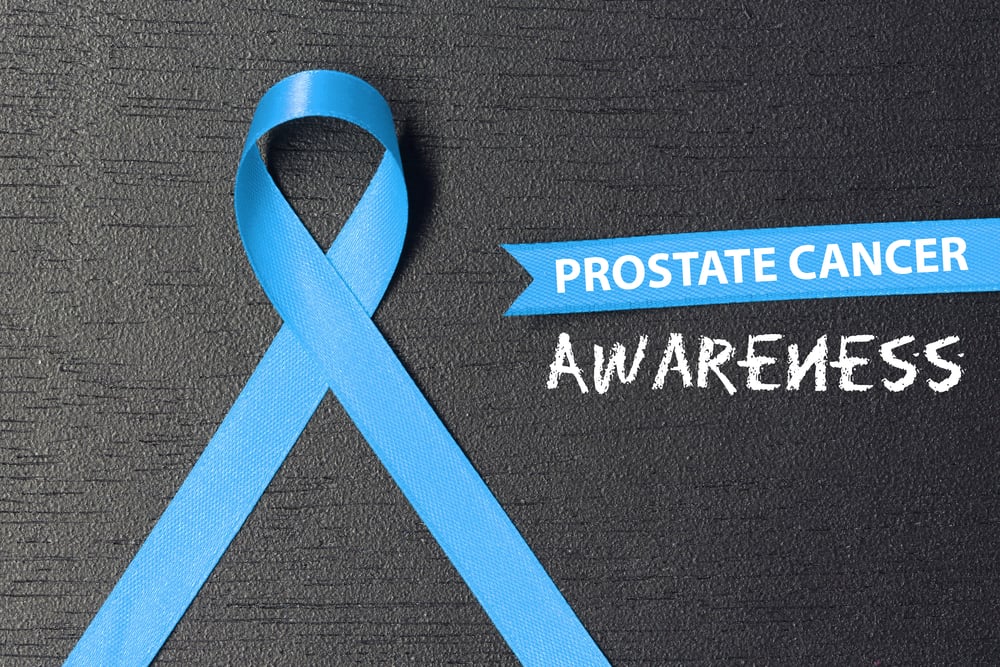Prostate Cancer: The Facts We Need to Know
Nearly 200,000 American men are diagnosed with prostate cancer every year, and about one in every nine men will be diagnosed in his lifetime. The disease arises when cells in the prostate start to grow, divide, and develop abnormally. Here’s what you need to know:

Related Topics (ads):
Types of Prostate Cancer
Adenocarcinoma
Adenocarcinoma arises from the glandular cells in the prostate’s lining. Because most of the cells in the prostate are glandular, adenocarcinoma is the most common type of prostate cancer.
Small Cell Carcinomas
Small cell carcinoma of the prostate is rare and accounts for less than 1% of diagnoses. It can be pure (having characteristics of small cell carcinoma exclusively) or mixed (showing some characteristics of adenocarcinoma).
Neuroendocrine Tumors (Other than Small Cell Carcinoma)
Non-small cell carcinoma neuroendocrine tumors are even less common than small cell carcinomas. They account for about 0.5% of cases. It’s characterized by linked to exaggeration of androgen receptor (AR) signaling, causing aggressive tumor growth.
Transitional Cell Carcinomas
Transitional cell carcinomas of the prostate are a type of cancer that forms in the prostate’s urothelial cells. This type is incredibly rare, and it’s difficult to diagnose and treat. Because it’s underdiagnosed, it’s difficult to say how many people have transitional cell carcinoma.
Sarcomas
Sarcomas are common in some parts of the body, including in the bones, but they’re uncommon in the prostate. Unlike the most common prostate cancers, sarcomas don’t arise from glandular cells - they arise from muscle cells.
Risk Factors for Prostate Cancer
Any man can develop prostate cancer, but some factors increase the risk:
- Advancing age - the disease is virtually unheard of in men under 40, and the risk rises quickly after the age of 50
- Being African-American or Afro-Caribbean - it’s not clear why
- Living in North America, Northwestern Europe, Australia, or the Caribbean - indicating that lifestyle factors are important
- Having an inherited gene mutation - like Lynch syndrome
- A diet high in red meat or high-fat dairy
Signs & Symptoms of Prostate Cancer
Early-stage prostate cancer doesn’t usually cause noticeable symptoms. In the later stages, the following symptoms may arise:
- Frequent urination
- A weak urine flow or difficulty urinating
- Waking throughout the night with an urgent need to urinate
- Blood in the urine or semen
- Sudden and unusual erectile dysfunction
Diagnosis
While catching cancer early and beginning treatment as soon as possible is the best way to ensure a good prognosis, prostate cancer screening isn’t routine. The tests that screen for it are unreliable, and the risk of misdiagnosis (and improper treatment) is significant.
If cancer is suspected; however, your doctor may conduct a range of tests to confirm, including a prostate-specific antigen (PSA) blood test. PSA is a protein produced in the prostate. Men with a higher PSA concentration are more likely to have the disease than men who don’t, but it’s not a sure thing.
If PSA test results indicate that cancer is likely, your doctor will take a biopsy, where samples are taken from different parts of the prostate to look for abnormalities.
Grading & Staging
Prostate cancer is staged from one to four:
- Stage 1: Cancer has been identified through a biopsy. It isn’t visible on any imaging tests, or the tumor is in one lobe of the prostate, and it takes up no more than 50% of the lobe.
- Stage 2: The tumor takes up more than 50% of one lobe, or extends across both lobes.
- Stage 3: The cancer has spread to the bladder neck or the glands above the prostate or has spread to the rectum, anus, pelvic floor muscles, or pelvic wall.
- Stage 4: The cancer has spread to the lymph nodes or further.
Treatments
Active Surveillance for Prostate Cancer
Because it usually develops later in life, many doctors agree that if the disease isn’t causing any symptoms and the individual will likely die of old age before it causes symptoms, the risks and side-effects of treatment often outweigh the benefit. In those cases, your doctor will keep an eye on the cancer’s progression. This is called active surveillance.
Common Treatments for Prostate Cancer
Surgery is a common treatment for prostate cancer. It’s a suitable option if the cancer is causing symptoms and hasn’t spread beyond the prostate.
Radiation therapy may be used alongside hormone therapy for later-stage cancer. It may also be used with surgery to prevent recurrence after the tumor has been removed. In early-stage prostate cancer, radiation therapy can be just as successful as surgery in destroying cancer. If cancer returns after radiation, cryotherapy may be used to destroy the cancer by freezing it.
Chemotherapy is not typically used to treat prostate cancer unless the cancer has spread beyond the prostate, and hormone therapy is ineffective.
Outlook
The 5-year survival rate in men whose cancer hasn’t spread is nearly 100%. For men whose cancer has spread (stage 3 or 4), though, the prognosis is much poorer, and the 5-year survival rate is about 30%.
It’s important to be proactive. If you have any symptoms at all, speak to your doctor about getting checked. When they seek treatment early, most men who have prostate cancer live full and relatively normal lives.
If you’ve been diagnosed recently and you feel you could benefit from support, reach out to the Prostate Cancer Foundation.
*All information acquired from the American Cancer Society.